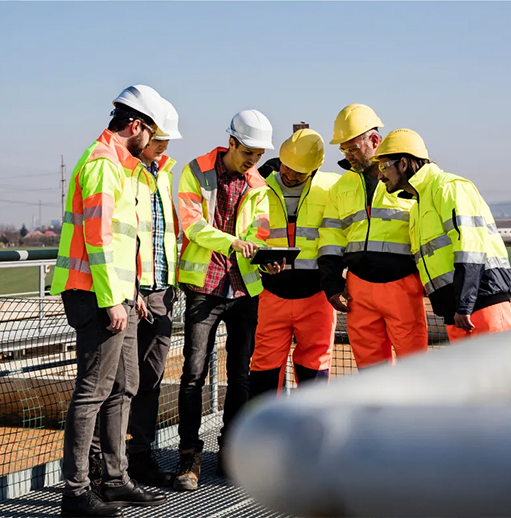
As a company matures, it needs to focus on building out infrastructure for strong growth. This includes both physical facility infrastructure and the underlying processes and systems that govern it. At the center of it all is a facility management system. Implementing a facility management system can be challenging. Facilities managers must bring disparate platforms together into an orderly, well-managed, and fully-integrated solution.
There are countless facilities management tips meant to simplify and expedite the process. Below, we’ll look at the process itself. How do you implement a facility management system the best way? While the process will differ for every company based on size, growth rate, approach to operations, and countless other variables, adoption of the system itself boils down to five important phases.
Phase I: Identify stakeholders
Who’s going to interact with your facility management system? Chances are, the answer is everyone—you just need to figure out how. For example:
- Ground-level employees submit fix-it tickets through a computer maintenance management system (CMMS) portal
- Department managers update the employee directory
- Executives rely on dashboard data for real estate and financial insights
- Facility managers collect and analyze data to improve the workplace
- Technologists integrate office IoT devices through the system
It’s all about the end-points, integrations, and interactions that affect the everyday operations of your facilities. Determine who needs what and why. You’re effectively gauging demand for certain features, benefits, and functions to make the next phase simpler.
Phase II: Software selection
What is facility management software if it doesn’t offer the features you need? Use the information you gleaned from the previous phase to inform the software selection process. Here’s how to select facility management software:
- Make a comprehensive list, including features and price points
- Eliminate outliers (too expensive, not enough features, etc.)
- Consolidate the list to a few contenders (three to five) and demo each
- Review the pros and cons of each option you try
- Choose software that offers the best combination of features, benefits, and price
This phase is arguably the most important because it dictates the true implementation of your facility management system. Consider every facet of software, from the user interface, to integration opportunities, to the development track record of the company behind it. Always keep in mind that this software is the gateway to all things facility management. Does it meet the criteria for your needs and expectations?
Phase III: Define and build out the system
With the right software in hand, begin to map out workflows. How are you going to integrate this new facility management software into your operations to create a system? Consider the following:
- Processes and tasks you could automate through the platform
- Data collection and reporting you can revamp within the software
- Communication and collaboration modes integrated into the software
- Technology considerations necessary for proper integration
- Antiquated or manual processes that need to be rebuilt within the platform
Take time to consider everything you learned in Phase I and consider how to tie these needs, wants, and expectations into the software to form a true facility management system. Expect challenges—a few square pegs with round holes. Take the time to build out each unique facet of the system so it works right, the first time. The smoother everything works, the fewer headaches there are bound to be as the system becomes a mainstay.
Phase IV: Program and deploy
Before rolling out a facility management system, make sure it’s programmed accordingly. A preemptive rollout could disrupt systems and frustrate employees. Here’s what to consider at the final stages before a deployment:
- Test all workflows and processes to make sure they work as expected
- Establish credentials and tiered permissions for users and stakeholders
- Identify cross-departmental considerations, such as portals and workflows
- Confirm integrations and accessibility between applications
- Run a security audit and systems check to close any vulnerabilities
This phase is the wash, wax, and polish stage—the finishing touches before your facility management system is ready to hit the road. Keep in mind that any growing company will face new challenges that necessitate an evolving facility management system. What you build and deploy today might not be what you use five years from now—but its purpose is to get you to that point.
Phase V: Normalize usage
With a facility management system in place, make it the standard behind everything you do. It should be the backbone of facility operations and the de facto system for decision-making. The only way to recoup your investment in such a system and to reap the benefits it offers is to use it.
Follow each of these five phases and you’ll find it easier than you realize to implement facilities management software. It’s a progressive process that ensures you meet the demands of your facilities by working backwards to identify them, then choosing software and coordinating a system that supports them. Is it an arduous task? Absolutely—but it’s one with a road map. Be thorough in each phase and the result will be a facility management system that helps your business continue to grow.
Keep reading: How to select facilities management software


